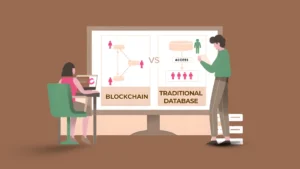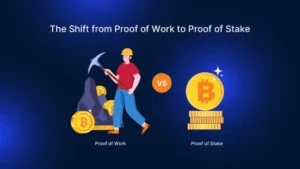
Slippage is a critical concept for traders on Decentralized Exchanges (DEXs) to understand. It refers to the difference between the price a trader expects to pay for an asset and the price they actually pay when the trade is executed. This discrepancy can have significant implications for trading strategies and overall profitability. In this blog, we will explore the reasons why slippage happens on a DEX, how it impacts trading, and strategies to manage it effectively.
What is Slippage?
Slippage is the difference between the price a trader expects to pay for an asset and the price at which the asset is actually bought or sold. This discrepancy occurs when the market price of an asset changes between the time an order is placed and the time it is executed. Slippage can happen in both directions: positive slippage occurs when the final execution price is better than the expected price, potentially resulting in a favorable outcome for the trader; negative slippage happens when the final execution price is worse than anticipated, leading to less favorable results. This phenomenon is particularly prevalent in volatile markets and on exchanges with low liquidity, where rapid price changes and insufficient trading volume can lead to unexpected deviations from the expected price.
What is DEX Slippage?
DEX slippage refers to the difference between the price a trader anticipates for a trade on a Decentralized Exchange (DEX) and the actual price at which the trade is executed. This occurs due to fluctuations in the asset’s price between the time the trade order is placed and when it is completed, which can be exacerbated by factors such as market volatility, low liquidity in the trading pool, and the size of the order. On a DEX, where trades are executed through liquidity pools rather than a centralized order book, price slippage can be more pronounced, especially for large trades or during periods of high market activity. Traders on DEXs need to be aware of slippage and manage it through tools like slippage tolerance settings to mitigate its impact on their trades.
Why Does Slippage Occur?
Slippage occurs due to a combination of factors that disrupt the expected execution price of a trade. One of the primary contributors is market volatility. In highly volatile markets, the price of an asset can change rapidly and unpredictably within short time frames. This rapid price movement means that by the time a trade order is placed and executed, the asset’s price may have shifted significantly, resulting in slippage. Another critical factor is low liquidity. On Decentralized Exchanges (DEXs), trades are executed through liquidity pools rather than centralized order books. If a liquidity pool has low liquidity, meaning there aren’t enough assets available at the expected price to complete a trade, the execution price may deviate from the expected price. This occurs because executing a trade in a low liquidity environment can move the price of the asset itself, leading to slippage. The size of the trade also plays a significant role. Larger trades are more likely to impact the price of an asset, especially in markets with lower liquidity. When a large order is placed, it can exhaust the available liquidity at the current price, causing the remaining portion of the order to be filled at progressively worse prices, thereby increasing slippage. Transaction delays and network congestion further exacerbate slippage. On networks like Ethereum, high gas fees and network congestion can delay the processing of transactions. During such delays, the market price of the asset might change, leading to slippage when the transaction is eventually executed at the new price.
What is the Purpose of Slippage in DEX?
The concept of slippage in decentralized exchanges (DEXs) is not intended to serve a specific purpose but rather reflects the inherent dynamics of trading in a decentralized environment. Slippage Control in DEX plays a crucial role in helping traders minimize unexpected price changes by managing liquidity constraints and market volatility.
Slippage occurs as a natural consequence of factors such as market volatility, liquidity constraints, and the execution of trades in real-time within liquidity pools. Its primary role is to highlight the discrepancy between the expected and actual execution price of a trade. Understanding slippage helps traders manage their expectations and make more informed decisions by accounting for the potential variations in price that can arise during trading.
Additionally, slippage can provide insights into market conditions, such as liquidity levels and volatility, allowing traders to adjust their strategies accordingly. While slippage itself does not have a purpose, recognizing and managing its impact through Slippage Control in DEX is crucial for effective trading, helping traders mitigate risks and optimize their trading outcomes.
Why Does Slippage Happen on a DEX?
Slippage on a decentralized exchange (DEX) happens due to several key factors intrinsic to how these platforms operate:
-
Market Volatility
Cryptocurrencies and other digital assets can experience rapid and significant price changes. On a DEX, where transactions are executed directly through liquidity pools, the price of an asset can shift between the time an order is placed and when it is executed. This volatility results in the actual execution price differing from the anticipated price, leading to slippage.
-
Liquidity Constraints
DEXs rely on liquidity pools provided by users rather than a centralized order book. If a liquidity pool does not have enough assets available to fulfill a trade at the expected price, the execution price may deviate. This is because large trades can exhaust the available liquidity at the current price, causing the remaining portion of the trade to be executed at a less favorable price.
-
Order Size
When placing a large order on a DEX, the size of the trade can impact the market price. Large trades can cause a substantial shift in the price of the asset as they draw from the available liquidity. This change can result in the final execution price being different from the price at which the order was initially placed.
-
Decentralized Nature
Unlike centralized exchanges that have order books where buy and sell orders are matched, DEXs operate on automated market makers (AMMs) and liquidity pools. The decentralized nature means that there is no central authority to absorb price changes, leading to price discrepancies and slippage as trades are processed.
-
Network Congestion
On networks like Ethereum, high transaction volume or network congestion can delay the processing of trades. During this delay, the price of the asset might change, resulting in slippage by the time the transaction is confirmed and executed.
-
Price Impact
On DEXs, executing a trade can affect the price of the asset itself, especially in thin or less liquid markets. When a trade is placed, it can move the price of the asset due to the changes in the liquidity pool’s balance, leading to slippage.
What Slippage Should I Use in DEX?
Choosing the appropriate slippage tolerance on a Decentralized Exchange (DEX) is crucial for balancing the execution of your trade with minimizing the impact of price deviations. The optimal slippage setting depends on various factors, including market conditions, liquidity, and trade size. In highly volatile markets or during periods of significant price fluctuations, a higher slippage tolerance is often necessary to ensure that your trade is executed despite rapid price changes.
Conversely, for assets with high liquidity and stable prices, a lower slippage tolerance might be sufficient to avoid unfavorable price differences while still allowing for successful trade execution. Large trades typically require a higher slippage tolerance because they can significantly impact the asset’s price and the liquidity pool. Conversely, smaller trades may require less slippage tolerance. Traders should also consider their personal risk tolerance and the specific characteristics of the asset they are trading. Setting slippage tolerance too high might result in larger price deviations, while setting it too low could lead to failed transactions or partial fills. Therefore, evaluating market conditions, understanding the asset’s liquidity, and adjusting slippage tolerance based on trade size and risk preferences are essential steps in optimizing trading outcomes on a DEX.
How to Avoid Decentralized Exchange Slippage?
Avoiding slippage on a decentralized exchange (DEX) requires a combination of strategic planning, informed decision-making, and effective use of available tools and features. Here are several strategies to minimize or manage slippage effectively:
-
Adjust Slippage Tolerance Settings
Most DEX platforms allow you to adjust the slippage tolerance for your trades. Setting this tolerance to a value that matches current market conditions and asset liquidity helps balance trade execution with acceptable price deviation. Lower tolerance settings can prevent excessive slippage, though they might result in failed transactions during volatile periods.
-
Trade During Low Volatility Periods
Conduct trades during periods of lower market volatility to reduce the likelihood of rapid price changes. Using market analysis tools and tracking volatility can help identify less volatile trading times.
-
Monitor and Trade in Liquid Markets
Focus on trading assets with high liquidity, as these markets typically experience smaller price deviations. DEXs with robust liquidity pools for specific assets can help minimize slippage, particularly for larger trades.
-
Use Limit Orders
Employ limit orders instead of market orders. Limit orders execute trades at a specific price or better, ensuring control over trade execution prices and minimizing slippage.
-
Break Down Large Trades
Divide larger trades into smaller, more manageable orders to reduce the price impact on the market. Smaller trades are less likely to deplete liquidity pools, resulting in more stable execution prices.
-
Stay Informed About Network Conditions
Network congestion can delay transaction processing and increase slippage. Monitoring network conditions and avoiding trading during peak congestion times can help mitigate this issue.
How Can Nadcab Labs Help with Slippage on DEX?
Nadcab Labs can assist with managing and minimizing slippage on Decentralized Exchanges (DEXs) through a range of advanced solutions and services. By leveraging their expertise in blockchain technology and decentralized finance, Nadcab Labs can implement custom trading algorithms and advanced slippage management tools that optimize trade execution and reduce price impact. They can develop and integrate sophisticated trading bots and smart contracts designed to monitor market conditions, adjust slippage tolerance dynamically, and execute trades at optimal prices. Additionally, Nadcab Labs can enhance liquidity management by creating or optimizing liquidity pools to ensure better price stability and lower slippage. Their expertise in smart contract development allows for the creation of custom solutions tailored to specific trading needs and asset characteristics. Through these innovations, Nadcab Labs helps traders and projects navigate the complexities of decentralized trading environments, ensuring more efficient and cost-effective transactions while minimizing the adverse effects of slippage.






